Traveloka PH
03 Feb 2020 - 9 min read
10 Places You Can Enjoy the Cherry Blossoms in Japan
Japan is known for plenty of noteworthy things, but nothing strikes a more picturesque image than the country’s famous cherry blossom season. Cherry blossoms in Japan do not simultaneously bloom in every region. Generally, there are two major considerations when attempting to capture the perfect day to watch the cherry blossoms fall—one is that the blossoms sweep upwards, from south to north. This means cherry blossoms open as early as January in Japan’s southernmost areas, like Okinawa. Conversely, in cold northern cities like Hokkaido, you could be seeing cherry blossoms as late as May. The second consideration is temperature. If it gets too warm or cold, it could affect the time of bloom. Please double-check Japan’s annual cherry blossom forecast for an accurate booking. Check out the best places and time to go cherry blossom viewing in Japan:

1. Yoshino Park (Kagoshima City)
Best time to visit: Mid-March until mid-April

Editorial Credit: Alexander Gatsenko / Shutterstock.com
This park covers 30ha of ground, with over 70,000 flowers spread amongst 140 other varieties, aside from cherry blossoms.Yoshino Park also boasts of a 234-meter hill that overlooks the other side of the Kinko Bay and the Mt. Sakurajima, a daunting volcano of the Kyushu region.The best part about this park is that they house 11 types of cherry blossom trees, so the blossoms can start early, though depending on the type of blossom, you could see them open until April!Park opening hours vary depending on the month of your visit, though they start closing at 5PM from November to February.

Don't confuse this park with Mount Yoshino, another spot famous for cherry blossoms. Staying in Osaka? Book a tour of Mount Yoshino for a hassle-free trip.
2. Isshingyo Park
Best time to visit: Late March until early April
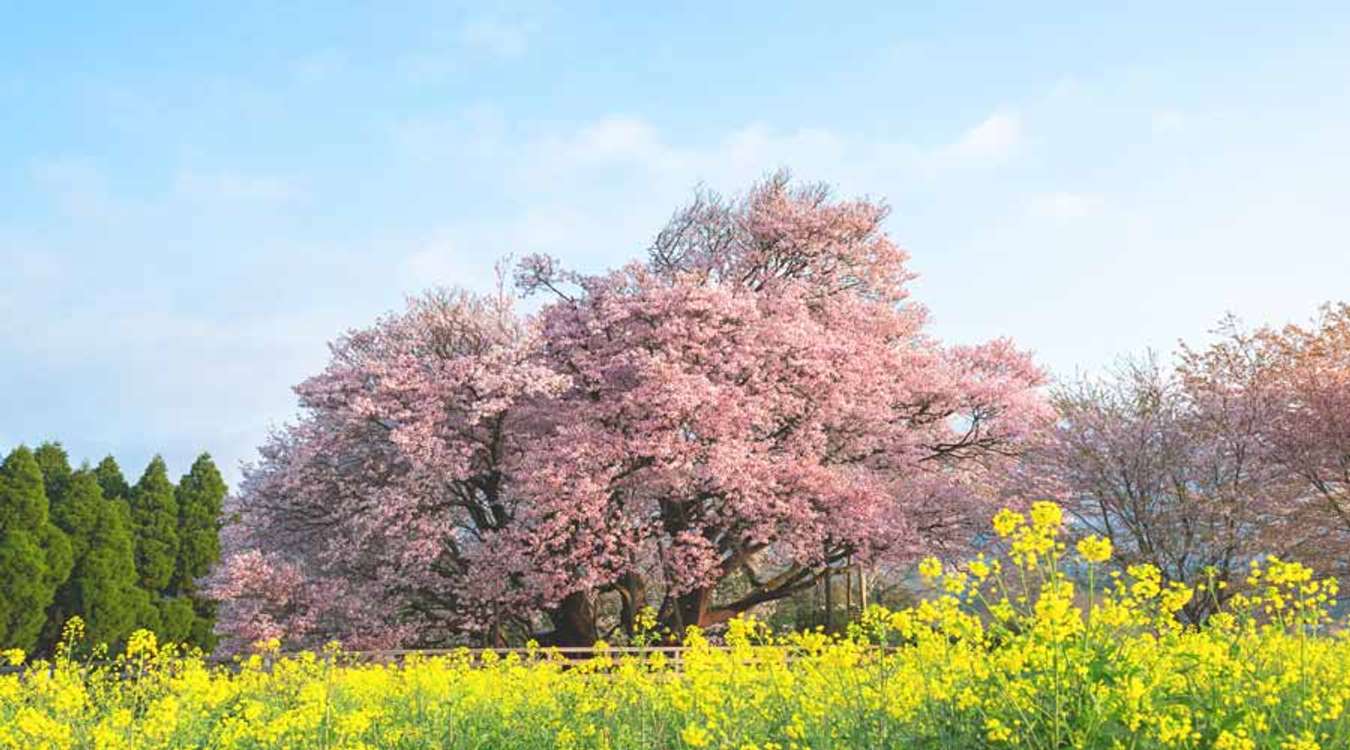
This famous landmark is special, thanks to the ancient cherry blossom tree that can be found here. It's more than 400-years old and is 14 meters high.The blossoms on this tree have a pale pink shade, which contrasts well with the rape blossoms which cover the surrounding field—if you’re lucky, the whole park will bloom at the same time.Aside from this picturesque scene, don’t miss the cherry blossom milk pudding, sakura dango (grilled rice cakes), colored sushi bowls, and the traditional inari sushi pocket snacks being sold all over the park.
3. Uminonakamichi Seaside Park
Best time to visit: Late March until early April
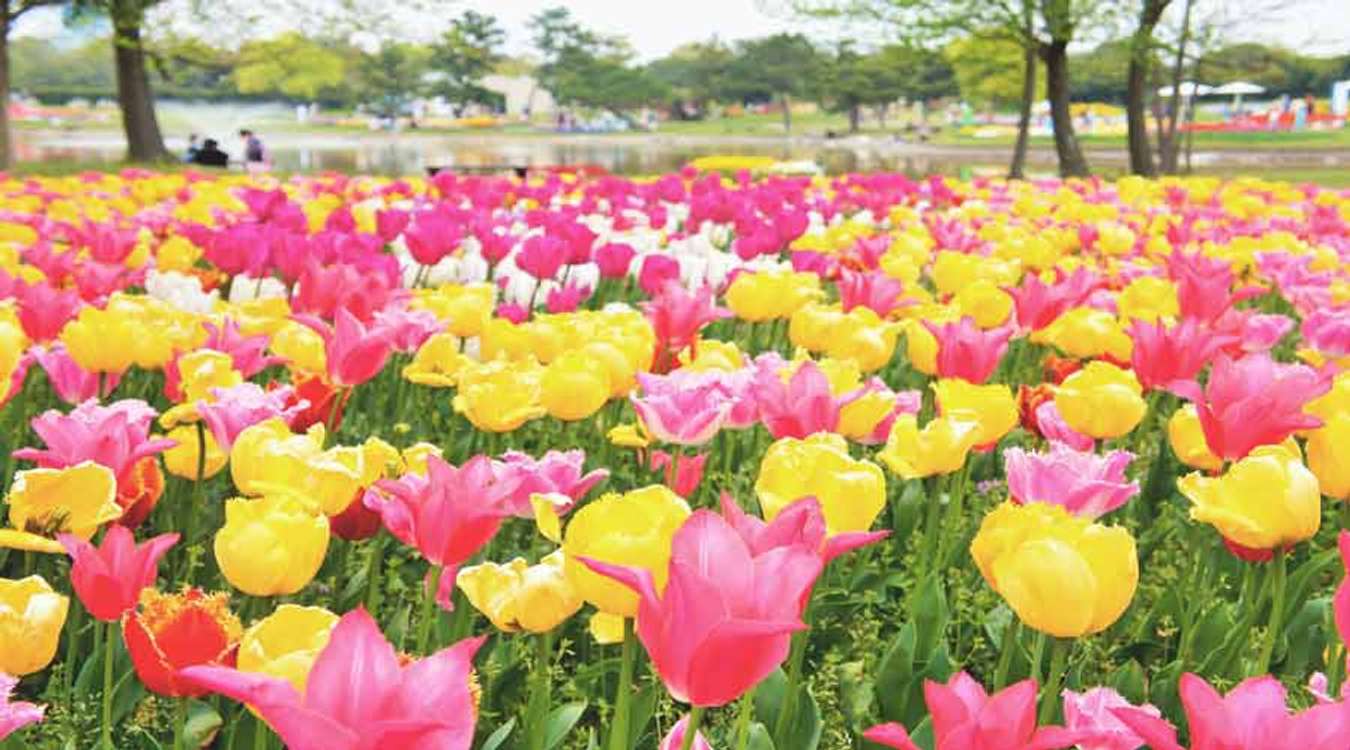
This is a family-oriented park that has some of the most breathtaking views of not just the flowers, but the surrounding sea as well.Located on a narrow peninsula across the bay from the central area of Fukuoka, this park is larger than most, with several areas dedicated to themed flower gardens, playgrounds, water parks, and zoos.Uminonakamichi Seaside Park is open all year round, showcasing different varieties of flowers according to season. From November to February, they operate between 9:30 AM until 5 PM. They are closed on December 31, January 1, and the first Monday and Tuesday of February.The admission fee is JPY450, but it won't hurt to bring extra cash for activities or treats that you'd want to spend on.
4. Philosopher’s Path
Best time to visit: Early April

This is not a park, but it is one of the more popular tourist destinations where you can see the cherry blossoms at their finest.The Philosopher’s Path is a stone path that traverses the northern part of Kyoto’s Higashiyama district.It lies between the iconic Ginkaku-ji (Silver Pavilion) and Nanzen-ji, so you can actually hit three destinations in one walking tour. The name is unique in that pays homage to a man named Nishida Kitaro, one of Japan’s famous philosophers.Walking along the Philosopher’s Path is free. There are plenty of restaurants, cafés, and boutiques that can be found along the path.To make it more fun, wear a kimono while exploring the place.
Looking for other cherry blossom spots in Kyoto? Go on a full-day tour and visit Ninna-ji, Tenryu-ji, Kitano Tenmangu, and many other sakura spots.
5. Kema Sakuranomiya Park
Best time to visit: Late March to early April
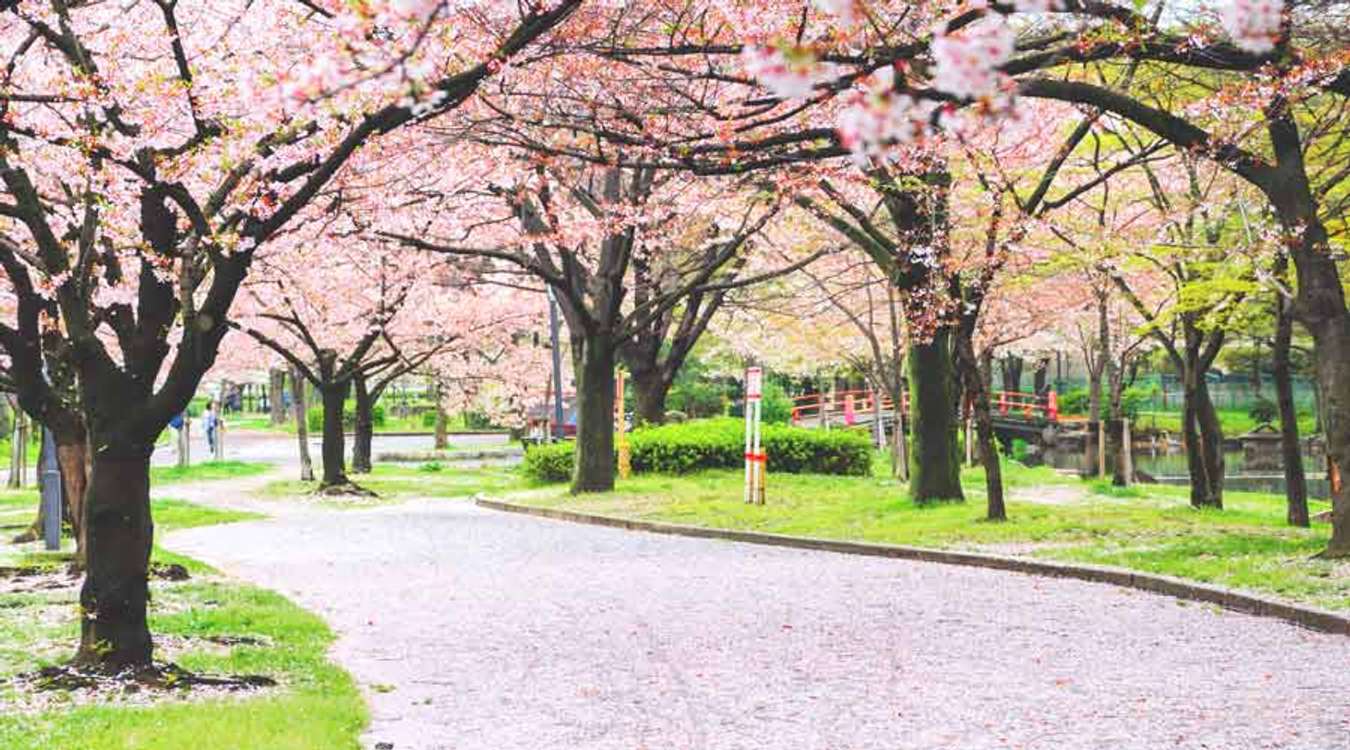
This well-known hanami spot has topped plenty of lists as one of the best places in Osaka to see the cherry blossoms.Over four kilometers of park stretch alongside the peaceful Ogawa River, and along the riverbank are the cherry blossom trees that grow as far as the eye can see.According to a recent count, there are about 4,500 cherry trees around the park, which makes it great for picnics, jogging, walking, or just hanging out with friends and family.There is no entrance fee for this park, and it is a PWD-friendly area.
6. Takato Castle Ruins Park
Best time to visit: Early to mid-April

Some have claimed this park to be one of the three best locations in all of Japan to view cherry blossoms.Located on a hill in Ina City, there are about 1,500 cherry trees that have grown across the park, all of which were assumed to have been planted in 1875 when the park was first made public.And although the original castle is mostly gone, there are still plenty of things to see that will make the trip worthwhile.During mid to late April, the park is illuminated from sunset until 10 PM, and there are still some buildings where you can sit and take a break.At the southern end of the park is the Shinsu Takato Art Museum, which hosts temporary exhibitions. The admission fee is JPY550 during the cherry blossom season, but admission is free during any other time of year.
7. Shinjuku Gyoen
Best time to visit: Mid-March to late April
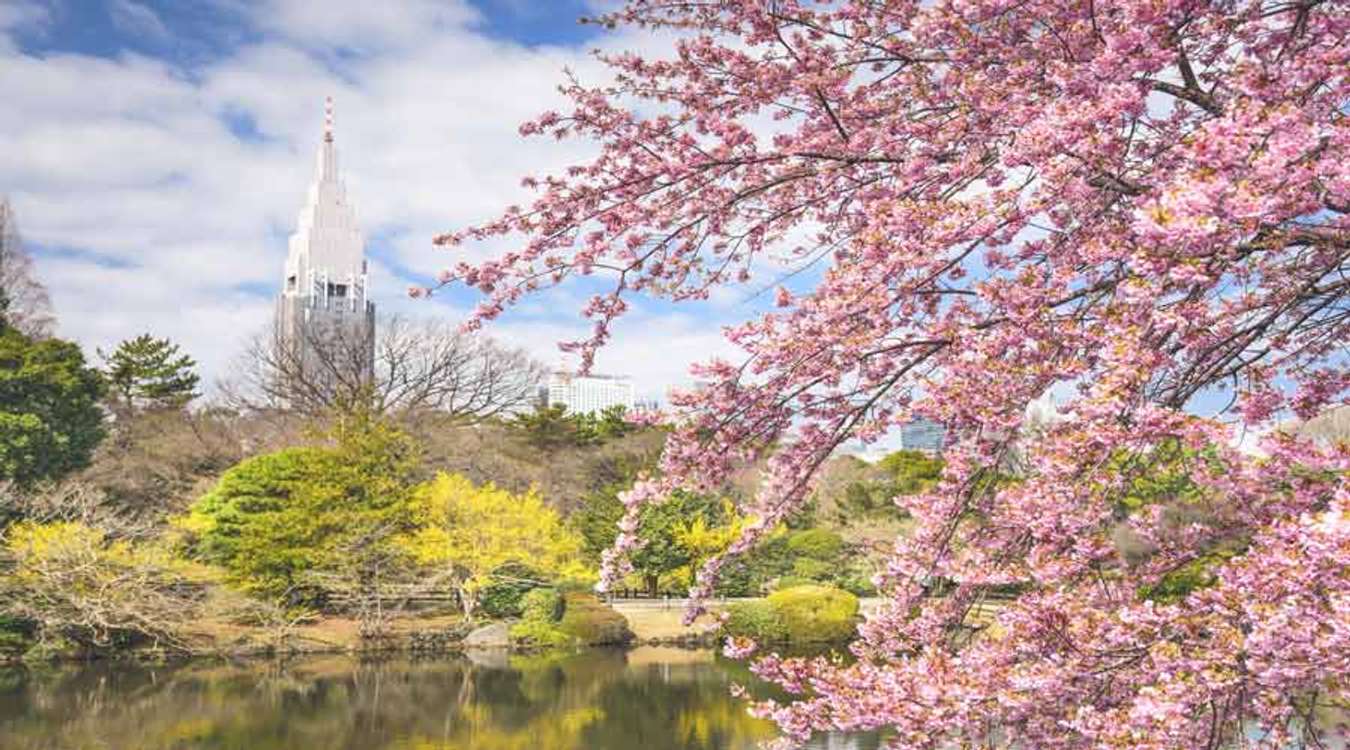
The Shinjuku Gyoen National Garden is one of the largest parks in Japan, and has multiple zones to explore, all with lush foliage and flora.Despite the crowds that come flocking here during springtime, it remains peaceful and serene, perfect for relaxing and enjoying a picnic on the grass.When you’re finished with one area, go ahead and stroll toward the English or Japanese themed gardens.And since there are more than 1,000 cherry trees spread across the park, many of them bloom at varying times so you’ll always catch an area in the park with blossoming flowers.The entrance fee is JPY200.
Want to do more than just gaze in awe of cherry blossoms? Why not go on a cherry blossom river cruise or book a tour that also has strawberry picking on its itinerary?
8. Hanamiyama Park
Best time to visit: April

Originally started by local farmers who used to plant ornamental flora and flowering trees along the hillside of central Fukushima, the park was made official and open to the public in 1959 and has since become one of the country’s best cherry blossom viewing spots.Thousands make their way to Hanamiyama Park for the unfiltered beauty of nature. There are also different types of cherry trees here, so the colors of the cherry blossoms will vary once they bloom.There is no entrance fee.
9. Moerenuma Park
Best time to visit: Mid-May

Designed by the artist Isamu Noguchi in 1988, this is probably the best place to see cherry blossoms all at once, since there is one section of the area that is a dedicated, dense grove of just cherry trees.Because of the climate of the northern area of Japan, the flora here is slightly different and will bloom later than most.Moerenuma Park is quite modern and sleek compared to the other contenders on the list.Some of its man-made structures include the Play Mountain, the Hidamari glass pyramid, the Atrium, and Mount Moere, a 62-meter tall project built specifically for the park so you can view the flowers and the surrounding areas from above.To help visitors cover more ground, you may also rent a bike for JPY100 per hour. Admission is free.
10. Matsumae Park
Best time to visit: Late April to late May
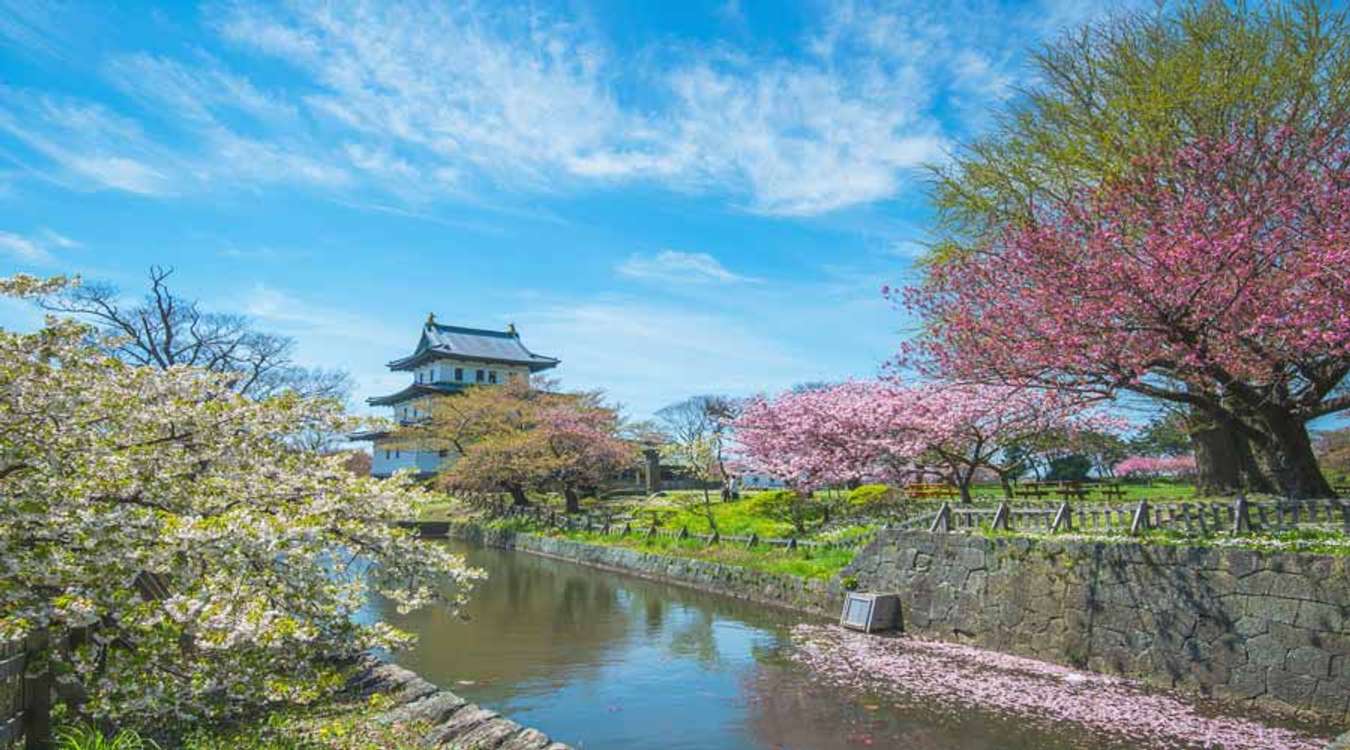
Rounding out the list is Matsumae Park, which has 250 species of cherry trees. It is home to around 10,000 cherry trees.Visitors can enjoy hanami here from late April until the end of May. The Hokkaido heritage-certified Matsumae Castle, Tsugaru Strait, and the cherry blossoms themselves are lit after sunset.
Enjoy more of Japan and explore Tokyo's tourist attractions.


 Facebook
Facebook Instagram
Instagram TikTok
TikTok Youtube
Youtube
